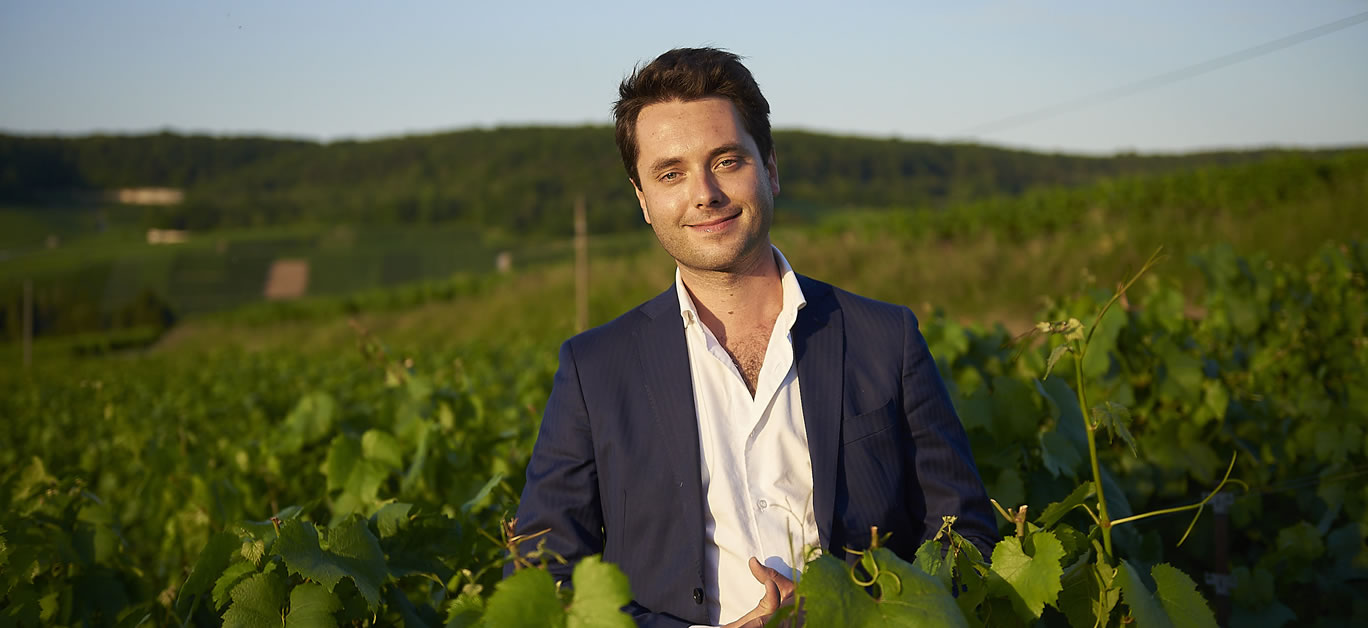Great French dynasties never die, despite their reputation of being revolutionaries who beheaded their royal family. The house of Frerejean Frères Champagne was born in 2005 when the heirs to the Taittinger matriarchal line decided that abandoning their passion for grapes to the Americans was inconceivable.
LLM writer Thierry Macquet had the pleasure of spending 48 hours with Rodolphe Frerejean-Taittinger, CEO of this rather new venture who considers himself to be a gentleman farmer more than an aristo in the Champagne world.
Rodolphe Frerejean-Taittinger, you hold a double-barrelled surname which brings together two well-known business dynasties dating back from the reign of the Bourbons. Could we start with a brief about who is Rodolphe as an individual, even if your family lineage has certainly influenced the man you have become.
I consider myself to be an hedonist and a lover of wine and gastronomy, my ancestors have always been entrepreneurs and I continue this family tradition in my own way. I started a career in banking but soon realised that champagne was in my blood, which explains why I swiftly abandoned the trading floors of big financial corporations for the green lands of Champagne where I really belong.
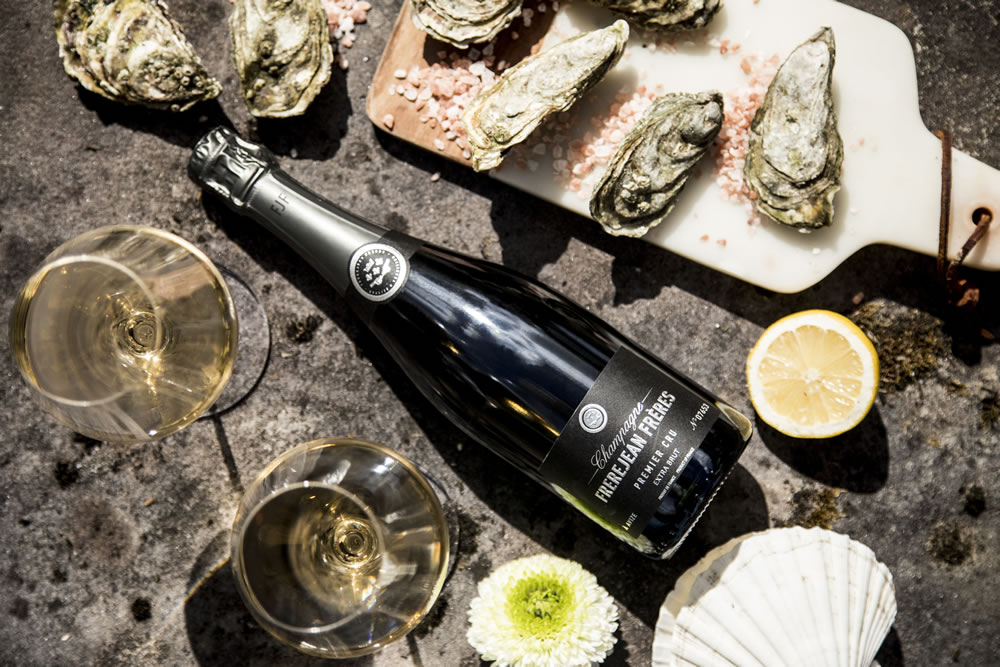
Your father’s family were the accredited suppliers of canons and other warfare material to King Louis XVI, Napoleon and even to Queen Victoria since we can still see the family crest on the canons at The Tower of London. Tell us more about this side of your heritage.
Indeed the history of Frerejean freres goes back to 1783 with my ancestors, the two famous brothers Louis and Georges Frerejean who were forge masters. In 1784, Louis left France as a spy to learn more about the English forges for three years, (England was much more advanced in terms of industrial know-how), and, upon return, he built 14 impressive forges in France with his brother, where magnificent cannons were produced and used by King Louis XVI, then for the French revolution, but above all, it contributed to the glorious hours of the Napoleonic battles and would continue to prosper until 1850.
The name Frerejean Frères (Frerejean Brothers) has always been engraved on our canons, and some are still in the Tower of London (remains of the battle of Waterloo) or at The Invalides in Paris. When we decided to launch our own champagne house in 2005 with my two brothers, it was obvious to use the brand name Frerejean Frères of my ancestors but also the family emblem of the cannons.
On the other hand, it seems that you literally ‘fell’ straight into a barrel of bubbles the day you were born – as the third son of a Taittinger heiress. Has your mother’s family had a much bigger influence on you and your choice of career?
Actually, it’s started very early, I was baptized at the age of one with our family tradition of a champagne spoon offered by my godfather. We grew up cycling with my brothers in the vineyards of champagne but also in Burgundy where my father’s family originates, but most importantly, I had the chance to grow up developing a real passion for our terroir of Champagne.
I always had a huge passion for the wonderful blanc de blancs Comte de champagne Taittinger (I keep very old bottles in my cellar preciously), these great champagne wines have shaped my palate. All the love that I have today for those fabulous grand cru villages on the Côte des Blancs where we are developing Frerejean Frères around Avize, the kingdom of Chardonnay, is definitely part and parcel of my DNA.
Since 2005, my best teacher was our cellar master to whom I owe a lot and I have been learning alongside him for 17 years. His expertise as a winemaker from the terroir around Avize is invaluable.
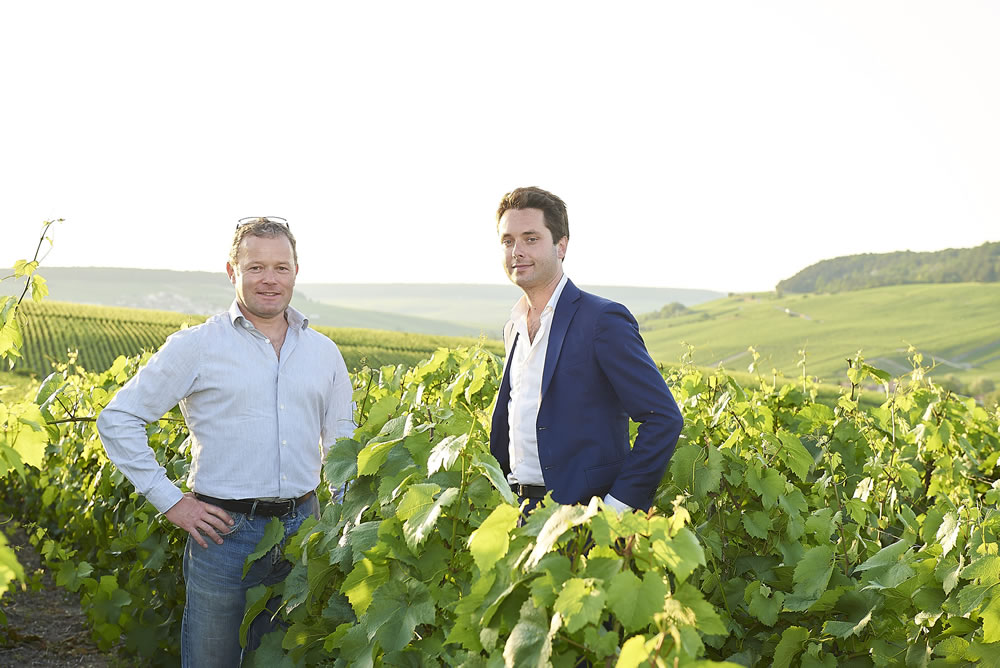
How was it to grow up in one of the most well-known dynasties of champagne producers in France? I am sure that some of your ancestors were rather eccentric characters?
I must say that I have a deep respect for the adventurous lives of my grandfather Taittinger and his brothers who were courageous, ambitious, and reckless entrepreneurs. The unity of the clan was their strength, and with unity, they managed to create a legendary brand in the 1950s.
There are many anecdotes such as the young brother of my grandfather, François Taittinger who went to jail during the second world war for giving poisoned champagne to the Nazis or the letters from Ian Fleming to my great uncle Claude Taittinger (that I always admired deeply) when he included the first Comte de champagne in the first James bond movie Doctor No with the legendary Sean Connery, which gave a massive boost to the brand in the 1960s.
The House of Frerejean brothers was born in 2005, at around the same time as when the Taittinger family was selling all their assets to an American fund. Was this move a decisive factor for you to go your own way with your two other brothers as partners?
Absolutely! The shock that the sale of our group Taittinger in 2005 (it was a big listed group which had diversified their activities with more than 300 hotels including Le Crillon and Le Lutetia – two palace hotels – in Paris, Baccarat Crystals, and Taittinger champagnes) to the American group Starwood, made us aware of the importance of continuing the family tradition, but above all, it was the trigger to create our small production on a human scale.
The House of Frerejean Frères was born, originally making lovely wines of champagne for us, for our family and for close friends – absolutely not a very commercial approach at the start but purely in a quest for lovers of champagne wines.
Meeting our cellar master in 2004, the talented Didier Pierson (fifth generation of vigneron d’avize) changed our vision and allowed us to marry our vines from grand cru cote des blancs, and this by putting into practice the vision of my brothers and I, with the talent of this great vine grower, to make beautiful champagnes. During that same period, my uncle Pierre Emmanuel very courageously bought back Taittinger champagne (in 2006) from the Americans, thank god!
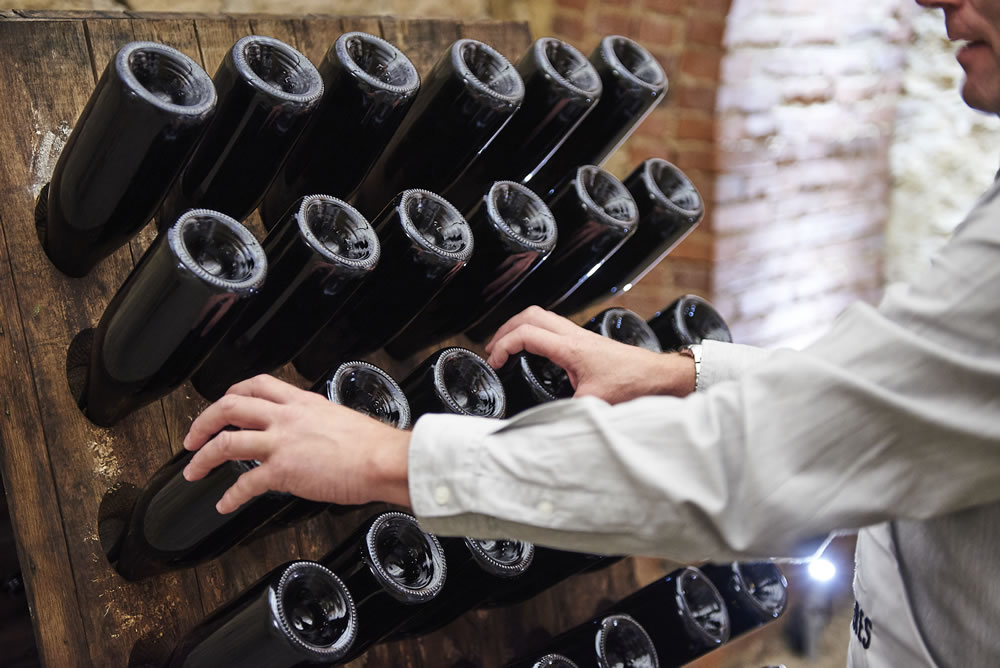
Tell us about those last 17 years? Was it a challenge or did your family background made things easier for the company to prosper?
Discipline and our quest to make quality products at Frerejean Frères Champagne, and only excellent champagne wines! This leitmotiv forced us to put in place very strict rules starting with the sole use of Chardonnay and Pinot Noir as Burgundy (the influence of my Burgundian father has obviously played a role), exclusively from grand cru and premier cru (the top 5% of the best vines in champagnes).
All our champagnes are products that emanate from the most iconic villages of champagne, with the grand cru of the cote des blancs originating from around our village as well as the grand cru of Avize where is our winery and cellar master Didier Pierson are located.
Indeed unlike most other champagne houses, we do not use pinot meunier, moreover we age our champagnes between six to eight years minimum (three times more than the average in champagne). With this approach, we had to wait seven years (while aging our champagnes) from 2005 to New Year’s Day 2012 when we released our first cuvées for the first time. I remember very well this big party that we hosted in a beautiful restaurant on rue Richelieu in Paris and where, for the very first time, the bottles of Frerejean Frères were opened with much joy and anticipation in this new year of 2012.
Of course, the family background helped us a lot because we were able to build a precise vision of our champagne house, but it was our cellar master Didier who was able to guide us towards the path of wisdom. In 2016, Laurent Dassault (who comes from a famous French family which builds private falcon jets) invested in Frerejean Frères, and the caring support of Laurent in our house has allowed us to develop strongly since 2016.
How could you describe Frerejean Freres champagnes, since you seem to be a hybrid house which is neither a big commercial entity – yet, not too small. Would you describe your brand as a kind of ‘gentleman farmer’ bespoke entity, who wishes to remain middle size and ‘couture’?
It is indeed a good way to introduce ourselves! We are a winegrower’s boutique house which produces artisanal champagne wines with character and emotions, unlike the large standardized brands and sometimes soulless productions.
When the big houses of champagne (Grande marques) compare themselves to large orchestras (by comparing their many instruments to justify their massive production – sometimes of several million bottles), we consider Frerejean freres as a small jazz band using and producing wine from grapes grown on the top nine villages in the heart of grand cru and premier cru. Sometimes we like to play only the sax, like our cuvée VV26 which only emanates from a single unique plot (the legendary village grand cru blanc de blancs of Cramant) whose oldest wine is from 1926 aged in Burgundy barrels, a wonderful wine of champagne that taste like a great meursault with bubbles.
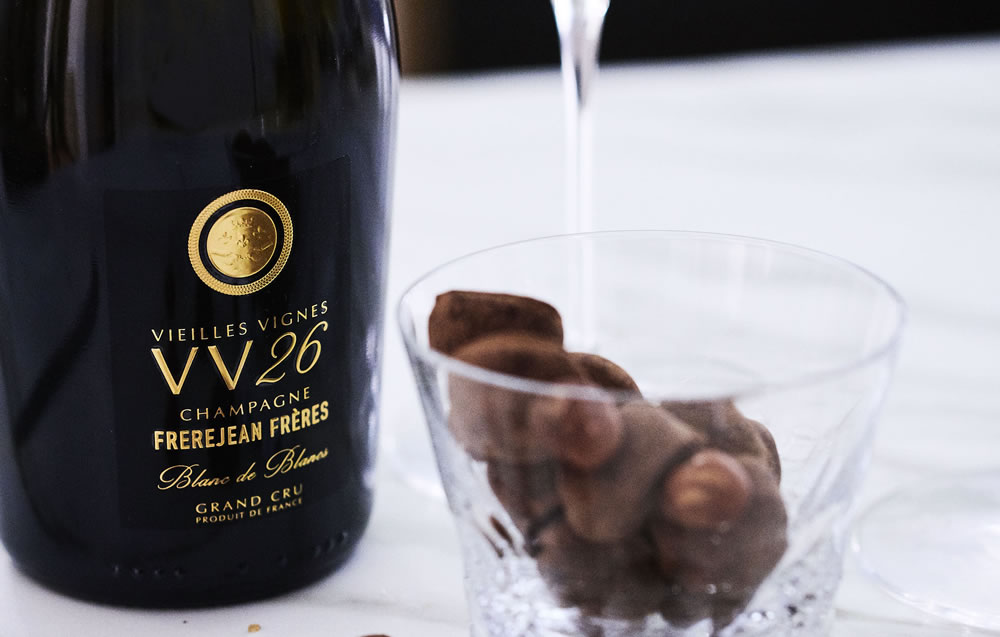
You have, over the years, developed quite a strong brand identity, with a variety of cuvees ranging from the traditional brut to the premium ‘blanc de blanc’. Could you give us a short brief about your range of products, and explain your choice of limited distribution locally and internationally?
I love unconditionally all our cuvées like my own children, they are each the expression of a very precise moment of conviviality, our vv26 is an emotional winter cuvée to drink by the fire in a big burgundy glass while enjoying a dish. It will go less well as an aperitif than our extra brut premier, which is a fabulous cuvée that we serve on Air France first class. The Cuvée des Hussard 2012 is very mineral, precise, elegant and vibrant.
We make gastronomic wines and we are proud to be the partner of the Michelin Guide for the third consecutive year. Our wines are currently under allocation, which allows us to choose our customers.
I am going to Japan for two weeks at the end of October, and we are proud to work with the finest Japanese chefs to whom we reserve our best wines, because I consider that this fabulous cuisine expertise greatly enhances our champagne wines.
Frerejean brothers became profitable in 2021, after a good 16 years of existence. Do you feel that this was a stepping stone to develop further the House, and could you share with us your strategy for the next five to ten years?
My uncle Claude Taittinger once told me a champagne house takes hundreds of years to set up, but with determination and a lucky star in 20 years it is possible. I like to think that we are at the end of our adolescence and that Frerejean frères is entering adulthood.
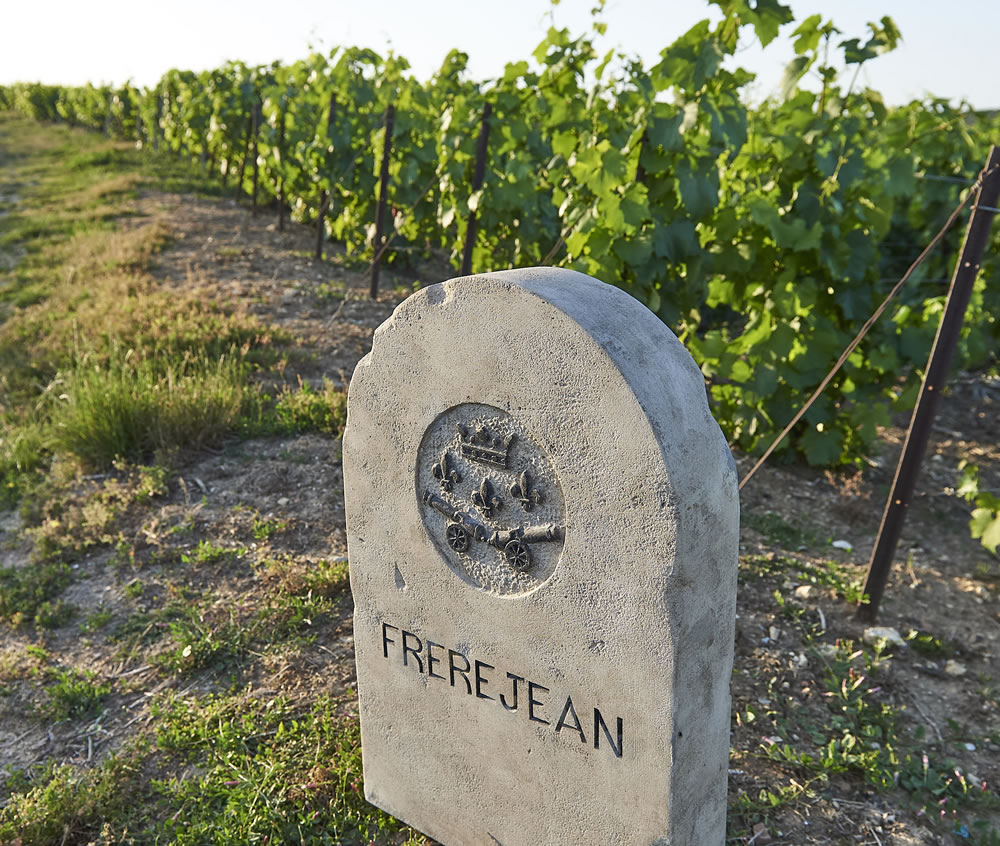
Your cousin Clovis Taittinger is now the sole owner of your mother’s family ex champagne house, which was started by your great Grandfather, which as such makes you two competitors. Do you feel that there is still room for new brands to emerge in a world which is known to be a rather close and conservative one?
I get along well with my cousin Clovis, with whom I had breakfast three days ago, we are not at all in competition, and I am very proud of Clovis, they are doing a fabulous job at Champagne Taittinger.
But it’s a very large house which produces millions of bottles, we are a small boutique of artisanal champagne wines from mostly grand cru, which produces less than 150,000 bottles under allocations, it’s totally different.
For more information, see frerejeanfreres.co.uk.












